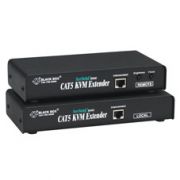-
BLACKBOX-Interface Converter介面轉換器-1 BLACKBOX-Interface Converter介面轉換器-2 BLACKBOX-PCI-ISA-PCMCIA介面轉換器 BLACKBOX-Relay/ Digital IO BLACKBOX-Repeater BLACKBOX-USB BLACKBOX-工業等級 回上一頁 -
產品搜尋
首頁 > BLACKBOX專區> BLACKBOX-Interface Converter介面轉換器 > BLACKBOX-Interface Converter介面轉換器-2

5242174

 2024/5/17 下午 01:19:39
2024/5/17 下午 01:19:39
- YEIDA宜大電線有限公司
- 宜大(YEIDA) 為美國 BELDEN and ALPHA 公司 代理商 (經銷商)
- E-mail: yeida.lin@msa.hinet.net
- E-mail : yeida@ms79.hinet.net
- TEL:(02)2995-4668(代表號) FAX:(02)2278-1798
- 地址:新北市三重區重新路五段639之1號9F
網站所採用資料及圖檔皆屬各公司所有, 本公司決無侵權之意,如有造成不便,請聯絡本公司














